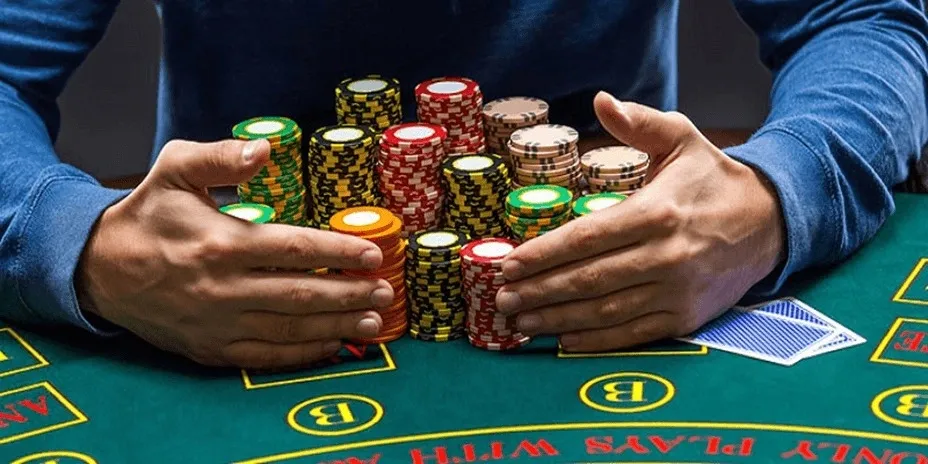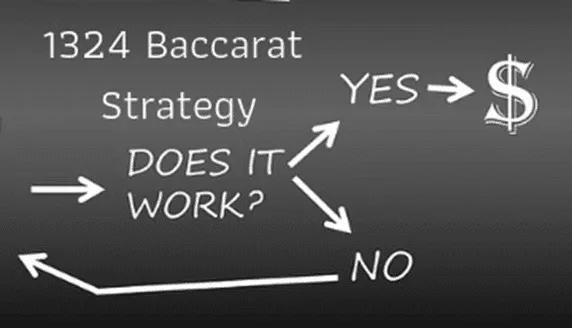Baccarat Strategy Unveiled: Learn How to Play and Increase Your Winning Chances

In our guide, we will uncover all the secrets of baccarat - and how to play it. And of course, how to use the best strategies. Our tips will give you a better insight into how the game works, even if you are already quite familiar with it.
The uniqueness of this material is simple. We won’t just list the standard rules, but will offer a complete strategy to approach the game. It is based on mathematical analysis, psychological insights, and years of experience from pros.
Ultimate Guide to Baccarat Techniques

Getting into professional baccarat play involves familiarizing yourself with best baccarat strategy. In this part of the series, we will cover all techniques, from simple fundamentals to advanced state-action models in gaming.
Basic Strategies for Beginners
The fundamental principles of successful baccarat play begin with understanding the basic concepts. Beginners are advised to start with simple bets on the "Banker," as this position statistically offers the lowest house edge — just 1.06%. In the initial gaming sessions, it’s important to focus on learning the game mechanics and the rules of point calculation, rather than immediately applying complex strategies.
It's best to start mastering baccarat with minimal bets, gradually increasing the stakes as experience grows. It’s essential to understand the value of each card.
In baccarat, there are three main types of bets. It's on the Player, the Banker, and the Tie. The payout odds for a Tie bet can be enticing, offering 8:1 or even 9:1. Seasoned players advise steering clear. The reason? The substantial house edge of 14.36%. Bets placed on the Player carry a house edge of 1.24%. It makes them less favorable compared to Banker bets.
An important element in answering the question of how to win baccarat lies in understanding the third card rules. Although the decision to take an additional card is made automatically based on established rules, knowing these rules helps better assess outcome probabilities. It's recommended to keep track of your bets and results for subsequent analysis of gaming sessions.
For an effective start, beginners should set clear financial boundaries. It’s advisable to allocate an amount for play that won’t affect financial well-being if lost. The size of an individual bet should not exceed 1-2% of the total bankroll, which will ensure a sufficient duration of play even in unfavorable situations.
Advanced Betting Techniques
A professional approach to betting in baccarat involves the use of complex strategies that consider multiple factors. Experienced players practice several advanced techniques and baccarat tips.
The Martingale system with a 1-3-2-6 modification is one of the most popular advanced strategies. Unlike the classic Martingale, this modification allows better risk control when increasing bets. The 1-3-2-6 sequence applies to the base bet: the first bet equals one unit, the second bet is three units, the third bet is two units, and the fourth bet is six units. If a loss occurs at any stage, the player returns to the initial bet.
The Labouchere system, specially adapted for baccarat, offers a more complex approach to managing bets. The player creates a sequence of numbers and adjusts the bet size based on the results of previous rounds. As an example, you might begin with a sequence like 1-2-3-4. The size of each bet is then set by summing the first and last numbers. If the player wins, these numbers are crossed off; if they lose, the bet amount is added to the end of the sequence.
The technique of "pattern-spotting" is another free baccarat strategy. It requires keen attention to detail and strong analytical thinking. Advanced players analyze result sequences to identify short-term trends; however, it’s crucial to remember the "gambler’s fallacy" and avoid overestimating the significance of past results for future outcomes.
The technique of "scoring" deserves particular attention — a system for evaluating potential outcomes based on the comprehensive analysis of multiple factors. This method involves tracking the pace of play, analyzing other players' behavior, and considering statistical patterns. When applied correctly, scoring allows for more informed decisions regarding the size and type of bets.
Understanding Bankroll Management
Proper bankroll management is a key factor that determines a player's success or failure. Professional players understand that even the most effective strategy can fail if you don’t know how to manage the money in your account. The answer to the question of how to win in baccarat largely depends on understanding these principles:
- Set clear financial boundaries. Determine an amount you are willing to allocate solely for playing baccarat without affecting your main budget.
- Follow the 2% rule. A single bet should not exceed 2% of the total bankroll to ensure a prolonged gaming session.
- Create a tracking system — baccarat system. Record each bet, the result, and the amount won or lost for future analysis.
- Set a daily loss limit. Establish the maximum amount you are willing to lose in a day and strictly adhere to this limit.
- Divide the bankroll into sessions. Split the total capital across several gaming sessions for more effective control.
- Use a profit-locking rule. When reaching a certain level of winnings, set aside a portion of the funds and continue playing with the remaining amount.
- Implement a tiered betting system. Increase or decrease bet sizes depending on the current state of the bankroll.
- Follow the "cool head" principle. Don’t let emotions sway you, and stick to your chosen bankroll management strategy.
Applying these principles will help you establish a solid foundation for long-term success in the game. To truly understand how to win at baccarat, it’s essential to remember that strategy isn’t the most important part of the game. What’s more crucial is knowing when to place a bet and avoiding the urge to chase losses.
Betting Progressions Explained
Progressive betting systems in baccarat represent complex mathematical models. The key distinction lies in the approach to adjusting bet size: positive progression involves increasing the bet after a win, while negative progression entails raising the bet after a loss.
The most popular positive progression system is the Parlay, where each win doubles the size of the next bet. Players typically limit the progression to three or four steps to minimize risk. For instance, an initial bet of 10 units will grow to 80 units after three consecutive wins (10-20-40-80). After reaching the maximum or after any loss, the player returns to the initial bet.
Among negative progression baccarat strategies, the modified Martingale stands out, where the bet increase after a loss follows an arithmetic rather than geometric progression. This approach reduces the risk of rapid bankroll depletion during an unfavorable streak. Many professionals prefer to combine elements from various progressions, creating their own hybrid systems.
A crucial aspect of using any progressive system is the correct choice of base bet. It should not exceed 1% of the total bankroll, allowing the player to endure several levels of progression without critical losses. It’s also advisable to predetermine the maximum number of steps in the progression.
Utilizing Baccarat Odds
The house edge in baccarat is one of the lowest among all casino games, making it especially attractive to professional players.
Statistical analysis shows that a bet on the "Banker" offers the lowest house edge — only 1.06%, while a bet on the "Player" has a 1.24% edge. Despite the 5% commission on Banker wins, it remains the mathematically most advantageous option. The "Tie" bet, with a house edge of 14.36%, is the least attractive from a probability standpoint.
An interesting aspect of baccarat is the probability distribution of different card combinations. A natural eight or nine (two initial cards) appears in approximately 20% of cases, which should be considered when developing a strategy. The probability of a Banker hand winning, excluding ties, is about 50.68%, while the Player hand wins 49.32% of the time.
An additional factor influencing decisions is the number of decks in play. The standard version of baccarat uses 8 decks, minimizing the potential for card counting. However, some game variations use 6 or even 4 decks, slightly altering the odds of various outcomes. In such cases, the house edge may vary slightly, requiring an appropriate adjustment to the baccarat betting strategy.
Risk Management Strategies
A professional approach to risk management in baccarat requires creating a comprehensive system to protect your gaming capital. The fundamental principle is bankroll segmentation — dividing the total capital into separate portions for different gaming sessions. It’s recommended to allocate no more than 10-15% of the total bankroll to a single session, providing a sufficient buffer even in unfavorable situations.
A key element of risk management is the "stop-loss" system combined with "take-profit." Professional players advise setting a loss limit at 20-25% of the session bankroll and a profit target at 15-20%. This ratio ensures a positive mathematical expectation in the long run. Upon reaching either of these thresholds, the gaming session should be immediately concluded.
One of the useful baccarat tricks is implementing a "red flag" system — triggers indicating the need to adjust the strategy or temporarily pause the game. These signals include: three consecutive maximum losses, deviating from the planned strategy more than twice in a row, experiencing strong emotional reactions to game results, or feeling a loss of control over the situation.
An important aspect of risk management is bet diversification, whether you're exploring baccarat how to play or other game tips. Although bets on the Banker provide the best mathematical odds, professionals recommend allocating part of the bankroll to Player bets to reduce result volatility. The optimal ratio typically involves 70-80% of bets on Banker and 20-30% on Player, entirely excluding the high-risk Tie bets.
Time management also plays a significant role in controlling risk. It’s advised to limit continuous play to 2-3 hours, with mandatory 15-minute breaks every hour. This helps maintain mental clarity and the ability to make rational decisions. Additionally, it’s crucial to keep detailed records of all bets and regularly analyze session statistics to identify potential issues in the risk management strategy.
Top Tips for Winning at Baccarat

Achieving consistent results in baccarat requires not only technical knowledge but also the right psychological mindset. To effectively use baccarat betting strategies, follow these tips to avoid common mistakes and significantly enhance your gameplay. Special attention is given to specific techniques and methods that have proven effective in practice.
Set Realistic Goals for Each Session
Setting realistic goals is the foundation of a successful baccarat strategy. Experienced players recommend the "micro-achievements" technique, breaking down the overarching goal into smaller stages. An ideal target is to set a profit goal at around 10-15% of the starting bankroll per session.
When structuring goals, it’s important to consider the time frame. Short-term objectives should focus on achieving steady results within a single session, while long-term goals might involve increasing the bankroll by 40-50% over a month. Professional players advise adhering to the "golden mean" — not setting the target so low as to lose motivation, but also avoiding unattainable goals.
Time management plays a critical role: the optimal duration of a session is 2-3 hours with mandatory breaks every 45 minutes. When reaching 75% of the intended goal, it’s advisable to become more cautious and reduce bet sizes to preserve the accumulated profit.
Stick to a Betting Limit
Professional baccarat players adhere to a strict baccarat strategy regarding limits, based on mathematical calculations and risk analysis. A key element of a successful strategy is setting a session limit, typically 10-15% of the total bankroll. This figure should consider the possibility of several consecutive losses and include a reserve fund for potential recovery.
The maximum size of a single bet should not exceed 3% of the session limit, and this parameter should be adjusted according to the current balance and overall game dynamics. Experienced players use a flexible stop-loss system, setting an exit point at 30% of the session’s initial bankroll.
It’s important to remember that established limits should not be revised during the current gaming session, regardless of developments. This approach will help you understand how to play baccarat and win.
Observe Other Players
Carefully observing other players can provide valuable insights for decision-making. Professionals pay special attention to so-called "anchor players" — those who demonstrate consistent results over the long term. Analyzing their behavior and strategies can offer useful clues for your own gameplay.
It’s important to note both the technical aspects of their play, such as preferred bet types or the average bet size relative to their bankroll, and behavioral indicators. Reactions to significant losses, decision-making speed, and overall emotional stability can reveal much about a player’s skill level.
However, it’s crucial to avoid the "imitation syndrome" — blindly copying others’ bets without understanding the underlying strategy can lead to significant losses. Observation should serve as a source of information for making informed decisions, not a template for automatically replicating other players’ actions.
Take Advantage of Bonuses
Wise use of bonus offers is one of the best baccarat strategies to win. However, it requires a systematic approach and careful analysis of the terms. Effective bonus management starts with understanding the different types of incentives. They are welcome bonuses, specialized VIP systems and cashbacks.
When evaluating conditions for promos, the playthrough requirement is important. It should ideally not exceed 30x. Time limits are also important — it's recommended to choose offers with a playthrough period of at least 7 days. Pay special attention to the contribution percentage for wagering, as baccarat often counts for only 10-20% of the requirement.
Professional players suggest starting with minimum deposits to test the terms and using bonuses only if there is a sufficient main bankroll.
Play Free Baccarat Games for Practice
Using the demo mode is a critically important step in the development of a professional player. It’s recommended to start each gaming session with 15-20 minutes of practice in free mode to fine-tune strategy parameters and assess one’s current emotional state.
The best strategy for baccarat involves understanding that when testing new systems, it’s essential to play at least 500 virtual hands to gather statistically significant results. Documenting all decisions and their outcomes helps identify weaknesses in a strategy without risking the real bankroll. Practicing bankroll management techniques and testing various approaches in high-pressure situations provides additional value.
Practice in demo mode should be regular not only for beginners but also for experienced players who want to keep their skills sharp and experiment with new strategic approaches. This allows players to continuously improve their game without financial risk, refining their baccarat strategy to win.
Common Mistakes to Avoid in Baccarat
Even experienced players sometimes make mistakes in baccarat that can significantly impact the outcome of the game. Understanding and avoiding these common errors greatly increases the chances of success. Let’s review the most common mistakes to eliminate from your game:
1. Ignoring the commission on banker bets. Many players forget to account for the 5% commission on a winning Banker bet. This leads to an incorrect assessment of potential profit and can distort calculations when using progressive strategies.
2. Excessive belief in sequences. Trying to find patterns in previous results often leads to irrational decisions. Baccarat hands are isolated events, with no connection between past results and what happens next.
3. Betting on tie. Despite the attractive payout odds of 8:1 or 9:1, the Tie bet carries the highest house edge — over 14%. In the long term, such bets lead to significant losses.
4. Lack of emotional control. Making decisions under the influence of emotions, especially after a series of losses or a big win, often results in deviations from the chosen strategy and unwarranted risks.
5. Using complex systems without proper preparation. Attempting to use complex progressive betting systems without prior testing and understanding their mechanics can quickly lead to bankroll depletion.
6. Neglecting table limits. Choosing a table with inappropriate limits can result in premature bankroll exhaustion or an inability to fully execute the chosen strategy.
7. Lack of a clear game plan. Spontaneous decisions and the absence of a predefined strategy greatly reduce the chances of a successful game. Each session should have a clear plan and set boundaries.
8. Chasing losses. Trying to recover from a series of losses by increasing the bet size is one of the most dangerous mistakes, which can lead to catastrophic consequences for the bankroll.
9. Ignoring bankroll status. Failing to monitor the current status of the bankroll and disregarding bankroll management rules can lead to its rapid depletion.
10. Underestimating the importance of rest. Extended play without breaks leads to fatigue and reduced concentration, which negatively affects the quality of decision-making.
Understanding and actively avoiding these common mistakes will help you build a more successful and resilient gaming strategy. Remember, professional baccarat play requires discipline, patience, and constant self-control.
What is the Most Effective Baccarat Strategy?

In the world of gambling, there are many baccarat tips and tricks, but a truly effective approach requires a comprehensive understanding of the game and a skillful combination of various techniques. Professional players highlight several key elements that form the foundation of a successful strategy.
Fundamental components of an effective strategy:
- Choosing the optimal position. Betting on the Banker provides the lowest house edge and ensures the most stable results over the long term.
- Adaptive bet sizing. A flexible system of fund allocation that considers the current state of the bankroll and the game’s dynamics.
- Using the modified 1-3-2-4 system. This particular betting sequence maximizes profit during winning streaks and minimizes losses during losing ones.
- Observing the principle of "positive expectation." Focusing on bets with the most favorable mathematical expectations.
- Integrating a stop-loss system. A multi-level protection for the bankroll, preventing catastrophic losses.
After understanding the basic elements of the strategy, it’s essential to apply them correctly in practice. Start with small bets, gradually increasing them as you gain experience and confidence. Carefully observe the game’s dynamics but avoid trying to find nonexistent patterns in past results.
Pay particular attention to emotional control — even the best strategy can become ineffective without proper discipline. Set clear boundaries for acceptable losses and desired profit for each session, and strictly adhere to these limits.
Regular analysis of your results can be very helpful. They help identify the strengths and weaknesses in your game. Keep detailed records of all bets! Not only numbers but also the reasons behind your decisions. It will help you continuously refine your strategy. And - adjust it to other conditions.
There is no absolutely flawless strategy. No one can guarantee a win in every gaming session.
Innovative Betting Systems in Baccarat
Numerous betting systems have been developed. But not all are equally effective in baccarat. Let’s examine some of the most innovative approaches. They have proven their effectiveness in practice. And also, they remain popular among pros.
Paroli System and its Applications
The Paroli system is a positive betting progression, offering a lower risk profile than classic negative progressions. The method involves increasing the bet size after each win, while keeping the initial amount in case of a loss.
In baccarat, this system is particularly effective with bets on the Banker, where the house edge is minimal. Professional players recommend limiting the progression to three increases in bet size, allowing profits to be locked in and avoiding excessive risk if the trend reverses.
The key feature of the Paroli system in baccarat is its flexible risk management. Unlike many other progressive systems, players control the strategy's aggressiveness by choosing the multiplier for bet increases and setting the maximum number of steps in the progression.
D'Alembert Strategy: Pros and Cons
The D’Alembert strategy, based on principles of mathematical balancing, offers a more conservative alternative to the Martingale system. In baccarat, this system has gained popularity due to its relative safety and ease of application.
Advantages of the D’Alembert system:
- Lower risk of rapid bankroll loss.
- Gradual increase in bet size.
- Simple to learn and implement.
- Effective for long gaming sessions.
- Quick recovery after minor losses.
- Flexible progression parameters.
- Psychological comfort with moderate risks.
Disadvantages of the strategy:
- Short-term profit potential is limited.
- Requires a substantial bankroll for extended play.
- Vulnerable to long losing streaks.
- Difficulty determining an exit point from the progression.
- Risk of being caught in a cycle of increasing bets.
- Dependence on the initial bet size.
- Less effective during sharp changes in game dynamics.
Applying the D’Alembert strategy in baccarat requires careful calculation of initial parameters and strict discipline. It’s recommended to start with bets that do not exceed 1% of the total bankroll and to set clear limits on the maximum number of progression steps.
Successful use of this strategy depends greatly on choosing the right moment to start a new progression and the ability to recognize unfavorable shifts in game dynamics. Experienced players often combine the D’Alembert system with other bet management methods, creating more complex and adaptive strategies.
FAQ
To succeed in baccarat, follow this approach: primarily bet on the Banker with a 5% commission due to its low house edge (1.06%), use conservative bankroll management with fixed bets not exceeding 2% of the total capital, and set clear loss limits.
Yes, there are effective strategies for baccarat. The most effective is a combination of mathematically grounded Banker bets with the modified 1-3-2-4 system for managing bet sizes.
In baccarat, the primary skill lies not in influencing the outcome of hands but in sound bankroll management and emotional control. Key skills include accurately calculating the expected value of each bet and the ability to stick to the chosen strategy.

Sergey Ilyin
An experienced specialist in the field of betting and gambling. He analyzes market trends, player behavior, and the dynamics of online gaming platform development. An expert in the intricacies of sports betting and knowledgeable about the regulatory framework of the gambling industry.
